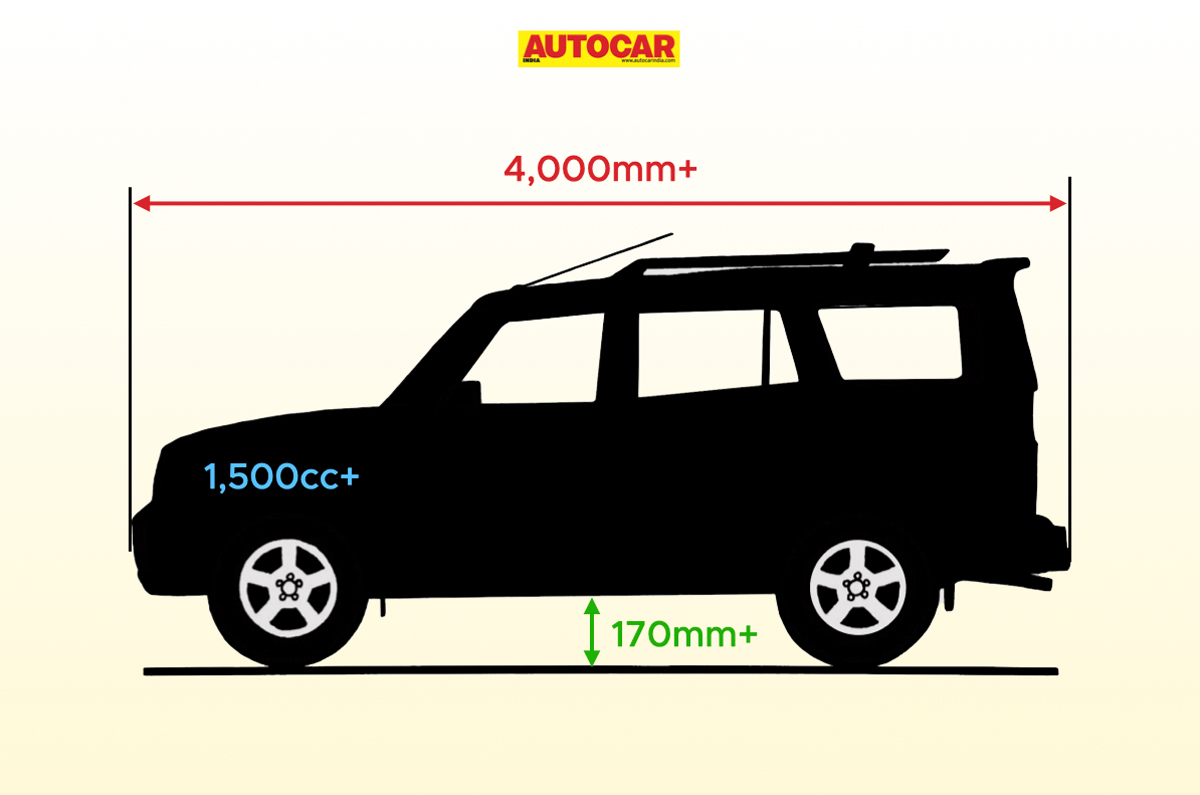Industry unsure of definition, which considers the measurement of ground clearance as unladen, rather than laden – the current industry standard used by ARAI.
The government’s GST council, at its 50th meeting on Tuesday, clarified its definition of UVs or Utility Vehicles. The prior definition left some ambiguity, which could have allowed certain models to slip through and avoid the higher compensation cess levied on SUVs.
What was the previous definition of an SUV?
As per the GST Council’s 48th meeting in December 2022, a higher compensation cess of 22 percent (on top of the 28 percent GST on all petrol and diesel vehicles) would be applicable to vehicles that met four criteria: having an engine capacity exceeding 1,500cc; a length exceeding 4,000mm; ground clearance exceeding 170mm; and being ‘popularly known as an SUV’.
This would potentially mean that any vehicle not labelled an SUV – such as a Multi-Utility Vehicle (MUV) or Crossover Utility Vehicle (CUV) – could bypass the UV classification and attract a lower cess, even if they met the other three criteria.
This loophole was even highlighted at the December meeting, with representatives from certain states requesting clarification on the matter. It was suggested that the fourth criterion be scrapped altogether, which then raised concerns about whether sedans would incorrectly be drawn into this category. The Council then agreed to further study and revisit the definition at a later stage.
What is the new definition of a UV?
The latest meeting clarified the definition, stating that the 22 percent compensation cess would be levied on only UVs – which include SUVs, MUVs and crossovers that meet three criteria of engine capacity, length and ground clearance. Of significance is that high-riding sedans, which have a ground clearance of more than 170mm, are exempt and will not be clubbed in the UV definition.
“There was a request that 20 percent taxation and 22 percent taxation be rationalised so everything gets merged and be taxed at 22 percent,” said Union Finance Minister Nirmala Sitharaman. “We have not gone with that recommendation, because if you do, then sedans also get included into it, and two states specifically had objected to including sedans.”
This means all sedans, irrespective of length (e.g. Skoda Slavia, Mercedes C-Class), attract a lower compensation cess. As before, all sub-four-metre vehicles (e.g. Tata Nexon, Nissan Magnite) also attract a lower compensation cess, as do midsize SUVs and MPVs with engine capacities less than 1,500cc (e.g. Kia Carens, Hyundai Creta), while large UVs with hybrid powertrains (e.g. Toyota Innova Hycross, Maruti Invicto) attract 15 percent, rather than 22 percent cess.
“The vehicles, by whatever name they may be called, provided they meet the three parameters, which are length exceeding 4,000mm, engine capacity exceeding 1,500cc, and unladen ground clearance of 170mm and above [can be defined as UVs],” Sitharaman added.
Laden versus Unladen
The last point of the clarification has sparked a stir in the auto industry, because the industry measurement of ground clearance as per IS 9435 standard specifies laden, rather than unladen ground clearance. Some car manufacturers have issued statements saying they will wait for an official draft notification before issuing a formal reaction, in case there is some further clarification on the ground clearance debate.
“We have taken note of the announcement made during yesterday’s GST Council meeting about amendment in Compensation Cess for utility vehicles. We will wait for the notification to understand the details before assessing the impact. At this point, we would like to refrain from commenting further,” said Toyota Kirloskar Motor.
Meanwhile, a Mahindra spokesperson said, “We are evaluating details of the changes announced by the GST council on GST rate changes, for certain types of SUVs/ MUVs. The change relates to a re-categorisation of GST rate, based on unladen ground clearance, versus the current laden ground clearance criterion. We await the official notification related to this change, which should also include the definition of unladen ground clearance and process to measure the same. Once received, we will approach the certification agency for potential recertification of the relevant models, based on the updated definition, if necessary. We are working through SIAM with the appropriate authorities.”
Other industry insiders, who did not wish to be named, have told Autocar India that the announcement creates a huge challenge for the industry, which does not have the means to measure unladen ground clearance. The industry is awaiting the draft notification that details out the new UV definition and hopes that this anomaly of ground clearance is rectified to align with the current industry practice.
Also See:
June sees lowest car, SUV sales in the first half of 2023
Maharashtra: Rs 25,000 fine on parents of minors caught driving


